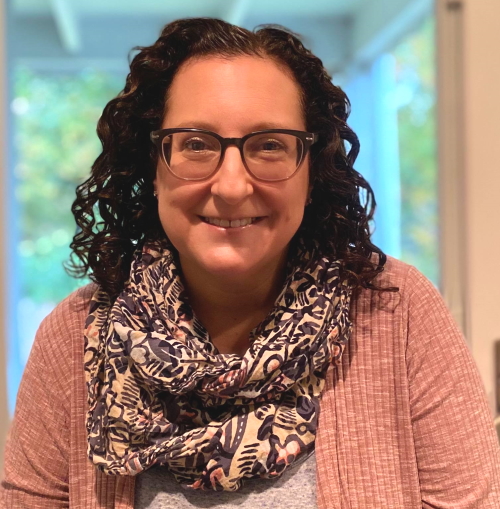 BRAZHYK/SHUTTERSTOCK
BRAZHYK/SHUTTERSTOCK
This summer was filled with disappointments as each camp I had enrolled my daughter in — both day camp and overnight camp — were cancelled. All around the country, young campers’ hearts were broken. As a past camper myself, I felt these young people’s pain. Camps are the place where lifelong friends are made, love is found and experiences cannot be replicated.
As the school year started, schools across the country made plans to facilitate learning in the remote and hybrid settings. Unlike camps or youth programs, our schools can’t just shut their doors — our kids have the right to a free and appropriate public education.
In just a few months schools have reinvented education. From online learning platforms to Zoom norms, from how we assess students to how we encourage collaboration. Each school and district has made choices on how to educate their students best. What tech tools to use. How to schedule instruction. How to track attendance. How to make sure that every kid has access and is learning. In just a few short months, there are many lessons learned from schools operating remote programs that can be applied to after-school and summer programs that want to continue to impact the youth they serve.

Shira Woolf Cohen
As a “principal on pause” this year, I have partnered with my sister and longtime friend to establish Innovageous, an education consulting group working to ensure continuity for all kids by building the capacity of schools and organizations to implement innovative and courageous solutions in K-12 education. Our work with schools has allowed us to see what’s working — with engagement, attendance, interest and instruction — in schools across the country.
As a mom of a fifth grader, I see an opportunity in this year’s remote instruction. There is opportunity for my daughter to more intensely explore her interests, foster her love of art and spark her mind with creative problem solving and STEM projects. But I can’t do it alone! I need community programs, art classes and STEM instructors who can offer experiences to my child that I don’t have the knowledge or capacity to offer myself.
Experiences in the online world can be high quality, can yield outcomes and allow kids to foster their interests. Out-of-school programs that are looking to expand their offerings to the online space have many things to consider as they create a space that kids want to be a part of.
How to reach kids, partners
Through our work with Innovageous and as online educators, we’ve come up with some important considerations for OST providers to keep in mind when developing online opportunities:
- Timing of OST programs can be flexible — especially now that many schools have days that are asynchronous learning. Choose a time that makes sense for students who would come to your program. For example, offer drop-in academic support online during days where students don’t have to be live online or debate club about current events on a weekday morning before school.
- Expand your program’s boundaries to serve more students in an online space. With kids learning online throughout the country, there’s a wider geographic area to recruit from.
- Choose your platform and stick to it. Whether you use Google Meet or Zoom or Webex, choose one to use. There’s nothing worse than being responsible for learning more than one live streaming platform — they can get confusing.
- Pick a handful of tech tools that you are going to use regularly in your program. Quality over quantity. Make sure your tech tools include a way to collaborate, means to show media and an app for creation. Choose one tool for each purpose. If you need some ideas check out Google Forms, Google Jamboard, Google Docs, Google Slides, Menti, Padlet, Pear Deck, Ed Puzzle, Kami, Sketchpad, Flipgrid and Nearpod.
- Identify ways to build intentional relationships with the program participants. Include online community-building activities and opportunities for self-reflection. Be considerate of what our kids are impacted by in today’s world and make space for courageous conversations.
- Bring in outside guest instructors for your program. In this virtual world, it’s so much easier for guests to join your class. There’s no more taking off from work for a half day, it’s just a “zoom” in and out. Take chances on your asks and shoot for the stars. Bringing guests into your program allows participants to learn about career professionals, learn about how to further their interests and understand the connection between your program and real life.
- Differentiate the activities of your program based on participant interest. Focus on what youth are looking to do to build their interests, hobbies and careers. Expose participants to new ways of doing things and getting involved in their community. Let’s frame this year as an opportunity.
- Involve families in your program. Communicate often and regularly. Invite them to be a part of your activities. Encourage participants to share what they are learning and doing with their families. Share feedback — both praise and concerns — with families to help their children succeed.
The past six months have changed the way we serve young people. Schools and youth-serving organizations are rethinking the way we meet kids’ needs — academically, socially and emotionally. It’s important that we don’t just wait for the pandemic to be over and reopen our programs. The time is now to rethink what works best. There are opportunities for programs to expand their thinking, broaden their approach and reach partners and young people like never before!
Shira Woolf Cohen is an educational leader and facilitator of professional learning. She is the co-founder of Innovageous and an adjunct professor at Holy Family University and University of Phoenix where she supervises aspiring teachers and principals during their practicum experiences.





























